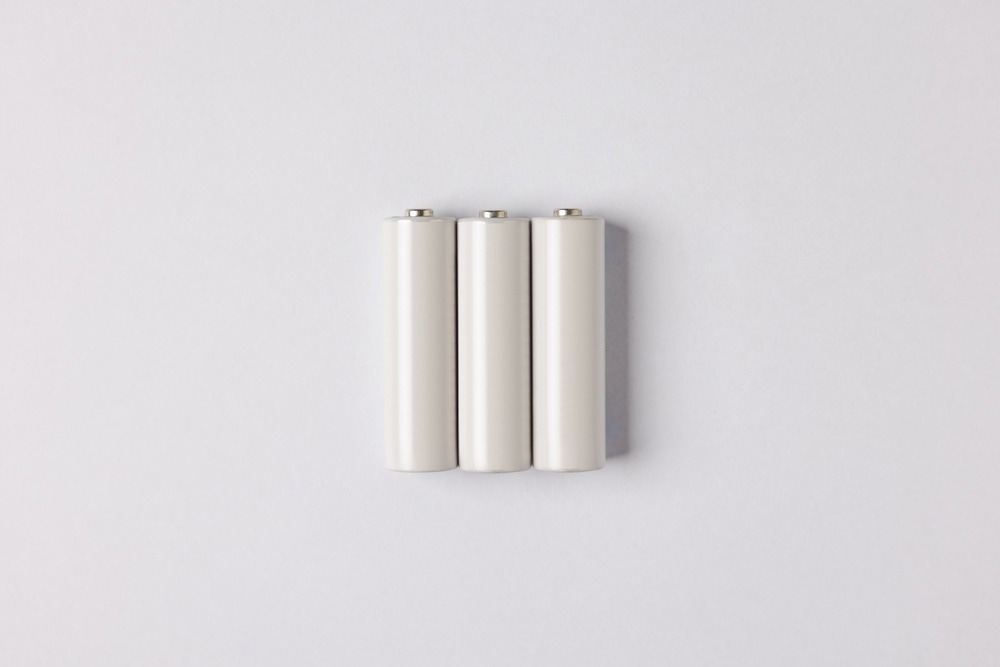Calcium ions could be used as an alternative technology to lithium-ion batteries (LIBs), bringing benefits as a result of their abundance and low cost. This article discusses the potential of calcium to be used in batteries and how its properties compare to lithium and sodium-ion batteries.

Image Credit: P5h/Shutterstock.com
Concerns about the security and sustainability of battery materials being utilized are growing. The long-term use of lithium in energy storage devices is in danger due to looming worries about scarcity, excessive prices, and safety. As a result, a collaborative project called "CaSino" began in September 2022 to explore the possibility of calcium-sulfur (Ca-S) batteries as a lithium-ion battery substitute.
Limitations of Lithium-Ion Batteries
In many ways, lithium, which has historically been a component of conventional batteries, is the ideal element for an electrochemical cell because it combines high cell voltage, high current storage, and quick ion migration. Compact batteries and quick charging and discharging are made possible. However, dendrites, which can develop after repeated charging and, in the worst-case scenario, result in an internal short circuit, make lithium-based systems more likely to catch fire. Lithium reserves are also scarce and are not found on all continents; mining is therefore controversial, and recycling lithium is expensive.
Limitations of Sodium-Ion Batteries
The chemical similarities between lithium and sodium have accelerated progress in the sodium-ion battery (SIB) industry. However, resolving practical constraints is necessary for this technology to compete in performance. The irreversible capacity loss after the first cycle, which substantially reduces the practical cell energy density, is the biggest problem.
Because sodium salts are more soluble than those in LIBs, SIBs have serious interfacial instability problems. This has two negative effects on cycle life: it accelerates electrolyte decomposition, which reduces cycle life, and it may cause soluble species to migrate to the positive electrode, which encourages cell self-discharge.
Calcium as a Battery Material
Similar to magnesium, aluminum, and zinc, calcium is a multivalent metal that is 400 times more common and consequently less expensive. It is also widely available and equitably distributed across the planet. Similar to lithium, calcium has a large storage capacity and cell voltage and is safer for short circuits because it does not operate by forming usual dendrites.
The biggest problem with using calcium is that it reacts easily and forms surface layers when exposed to moisture, oxygen, or even the electrolyte used in batteries. The oxidized surfaces hinder efficient charging and discharging by obstructing ion diffusion later on. Thus, the creation of a suitable electrolyte assumes a crucial role. In addition, using a sulfur cathode produces soluble polysulfides, which must also be avoided since they can obstruct the Ca anode.

Image Credit: seung heo/Shutterstock.com
Due to its widespread availability and low cost, calcium has been investigated for use in batteries. However, diffusion kinetics and cyclic stability are hampered by the greater size and higher charge density of calcium ions compared to lithium.
Latest Advances
In a recent study by Lakhnot et al. published in the journal Applied Physical Sciences, orthorhombic, trigonal, and tetragonal polymorphs of molybdenum vanadium oxide (MoVO) were used as a host for the calcium ions to develop an aqueous calcium-ion battery. Because these crystals frequently contain extensive hexagonal and heptagonal tunnels, which made calcium-ion diffusion simple, orthorhombic and trigonal MoVOs performed better than tetragonal ones.
In this study, the authors observed that Trigonal MoVO was able to reach a specific capacity of 203 mAh g-1 at 0.2 °C and 60 mAh g-1 at 20 °C, which was 100 times faster. The orthorhombic and trigonal polymorphs of the open-tunnel structure further enhanced the cycle stability and reversibility. The team elucidated that based on a survey of the literature, MoVO had one of the finest performances for calcium ion storage that has been documented to date.
The researchers stated that since calcium ions are larger and have a higher charge density than lithium ions, intercalating calcium ions into electrode materials is difficult. As a potential fix, they presented oxide structures with large open gaps having heptagonal and hexagonal channels.
The authors believe that this could create opportunities for high-performing calcium-ion batteries, which could provide a practical and eco-friendly substitute for lithium-based batteries.
More from AZoM: Scientists Create Brain-Inspired Superconducting Circuits
References and Further Reading
Battery News, Germany – Sustainable Batteries Based on Calcium And Sulfur, December 7, 2022. https://batteriesnews.com/germany-sustainable-batteries-based-calcium-sulfur/
Calcium-ion battery breakthrough could offer alternative to lithium-ion cells, The Engineer, August 3, 2022. https://www.theengineer.co.uk/content/news/calcium-ion-battery-breakthrough-could-offer-alternative-to-lithium-ion-cells/
Lakhnot, A. S., Bhimani, K., Mahajani, V., et. al., Reversible and rapid calcium intercalation into molybdenum vanadium oxides, Applied Physical Sciences, 119 (30) e2205762119 (2022).https://www.pnas.org/doi/10.1073/pnas.2205762119
Ponrouch, A., Palacin, M. R., Post-Li batteries: promises and challenges, Philos Trans A Math Phys Eng Sci, 377(2152), 20180297 (2019). https://www.ncbi.nlm.nih.gov/pmc/articles/PMC6635625/
Disclaimer: The views expressed here are those of the author expressed in their private capacity and do not necessarily represent the views of AZoM.com Limited T/A AZoNetwork the owner and operator of this website. This disclaimer forms part of the Terms and conditions of use of this website.